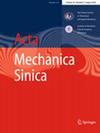Osteocytes, the primary cells in bone, play a crucial role in sensing external load environments and regulating other bone cells. Due to the piezoelectric effect of the mineralized matrix and collagen that make up bone, the mechanical stimulus received is converted into an electrical stimulus to affect the reconstruction of bone. Despite the importance of osteocyte, many studies have focused on the mechanical loading and fluid flow of it, there is still a gap in the study of the piezoelectric effects of various mechanosensors on the microscale. In this paper, we developed a finite element model of osteocytes that incorporates the piezoelectric bone matrix. This model is comprehensive, comprising the osteocyte cell body enclosed by lacuna, osteocyte processes enclosed by canaliculi, and the interposed charged ionic fluid. Additionally, it features mechanosensors such as collagen hillocks and primary cilia. In our study, we subjected the piezoelectric bone matrix model to triaxial displacement, subsequently assessing the electrical signal variations across different mechanosensors within the osteocyte. The observed disparities in mechanical perception by various mechanosensors were primarily attributable to greater liquid velocity changes in the polarization direction as opposed to other directions. Collagen hillocks showed insensitivity to piezoelectric signals, serving predominantly to mechanically transmit signals through solid-to-solid contact. In contrast, processes and primary cilia were highly responsive to piezoelectric signals. Interestingly, the processes oriented in the direction of the electric field demonstrated a differential piezoelectric signal perception compared to those in other directions. Primary cilia were especially sensitive to fluid flow pressure changes, which were influenced both by loading rates and external piezoelectric effects. Overall, our findings illuminate the complexity of mechanical perception within osteocytes in a piezoelectric environment. This adds a new dimension to our understanding and suggests avenues for future research in bone reconstruction and cellular mechanical behavioral transmission.


